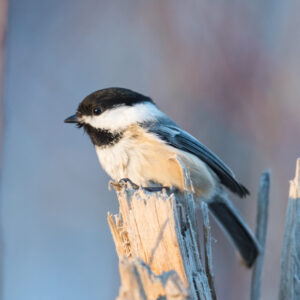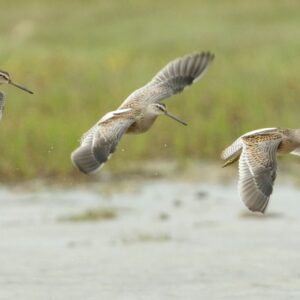8 Tips To Help Birds
November 1, 2017
Discover ways that you can help save bird lives with 8 tips listed below.
- Keep Cats Safe & Save Bird Lives
Cat-owners can help by keeping their cats safe, and thereby keep birds safer too. But everyone has a role to play in improving the welfare of cats and birds. Whether you’re a cat-owner, a nature-lover, or both, adding your voice to the chorus calling for change helps keep cats safe and save bird lives. To join the movement and learn more about the Cats and Birds initiative, please sign up for email updates. When yousign up you will receive updates on this initiative and on Nature Canada! - Reduce Window Strikes
Many are aware of the problem of birds hitting high-rise windows, but few are aware that 90% of the bird-window collisions occur with homes. If this is a problem at your home, cottages or workplace, reduce the risks by making the window visible to birds, and moving attractants like bird feeders to a safe distance. Also, please enter information about bird casualties caused by your windows on the FLAP MAPPER. For more information, click here. - Avoid Bird – Vehicle Collisions
Slow down on rural roads, especially sections that are near wetlands or open water, and especially during breeding and fledgling season (May to August). Drive the speed limit, which saves lives and reduces fuel consumption and carbon emissions. Drive defensively, keeping an eye out for birds or mammals on the roadside in rural areas, just as you would for people in town. Avoid swerving – instead, use your horn, slow down and drive straight. Only try to shoo a bird or mammal off the road if the coast is entirely clear. - Better Consumer Choices
Support bird conservation by purchasing shade-grown or bird-friendly organic coffee and chocolate from Latin America. Shade coffee farms mimic native forests and support more bird species than sun coffee farms. Many songbirds born in Canada spend their winters in the forests of Latin America and the Caribbean Islands.
Purchase locally-grown organic food if possible. Transportation of food long distances contributes greenhouse gases. Organic foods avoid pesticide use which can harm some bird populations.
For wood or paper products, select those that are certified sustainable by the Sustainable Forest Initiative (SFI) or the Forest Sustainability Certification (FSC). These certifications ensure that the companies are following management and harvesting practices that are beneficial to wildlife, including species at risk.
Reuse over recycle, and recycle over discard, as this uses less resources and energy. - Make your yard bird-friendly
A few tips on how to have a bird-friendly yard include:- Keep your pets under supervision/ control at all times.
- Avoid using pesticides and herbicides in your yard as they are harmful to birds and the food they eat (as well as you, your children and your pets).
- Provide birds with appropriate food, nest sites and cover. Plant native plants (plants that naturally grow in your region). Consider especially berry-producing trees and shrubs (e.g. Mountain Ash, Serviceberry, Chokecherry), perennials like asters, tubular flowers for hummingbirds (e.g. Bergamot), and shelter species like White Cedar.
- Keep feeders clean and disease-free by changing seed regularly.
- Place feeders either within one metre or beyond five metres from any large windows.
- Leave fallen leaves on the ground beneath trees and shrubs – they make excellent foraging sites for ground feeding birds.
- Provide and maintain a source of clean water (change it every few days).
- Support your local Nature group and conservation groups
Local conservation / naturalist organizations add much to the community and are an invaluable source of knowledge of nature. These clubs are usually volunteer run, and as much about social interactions (people who love nature getting together), as about conservation or documenting natural history. Support your local club by becoming a member and participating in an activity. Find your local provincial/regional nature network partner here. Many clubs offer activities for children – or even have special kids’ nature clubs. - Bird with a purpose: citizen science
Join one of Bird Studies Canada’s citizen science programs to make your observations count – such as the Christmas Bird Count, the Great Back Yard Bird Count or Project Feeder Watch.
Contribute your daily observations to science by entering them on eBird. - Celebrate birds
Join Nature Canada and its partners in celebrating International Migratory Bird Day each year. Dozens of events take place across the country from May to October, to mark the return or departure of our migratory feathered friends. These events are also a way of raising public awareness of birds and their conservation needs.



